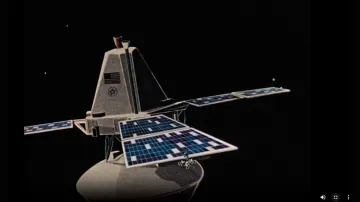NASA's Viking mission, which was launched in 1975 was a groundbreaking step in humanity’s quest to uncover life on Mars. While the mission achieved historic milestones, a new claim has suggested that the Viking landers’ experiments may have unintentionally destroyed the potential Martian life on the planet.
A historic mission to Mars
The Viking 1 spacecraft and its twin landers made history by successfully touching down the surface of Mars. Orbiting the Chryse Planitia region for over 6 years, the mission's landers collected soil samples, hoping to detect signs of microbial life.
The life-detection experiments were based on Earth’s culturing techniques, which added water and nutrients to soil samples to monitor microbial activity, such as growth and reproduction.
Inconclusive results spark ongoing questions
Initial experiments revealed signs of microbial activity, generating excitement. However, scientists deemed the findings inconclusive, leaving the question of Martian life unanswered.
Did liquid water harm Martian life on Mars?
Astrobiologist Dirk Schulze-Makuch from the Technische Universität Berlin has proposed a controversial theory recently. He suggested that the Viking landers might have discovered life but inadvertently killed it.
Writing in Nature Astronomy, he argues that the experiments’ assumption that life requires liquid water may have been flawed.
Mars is significantly drier than Earth’s Atacama Desert, where microbes survive by extracting moisture from salts in the atmosphere. On Mars, adding liquid water may have overwhelmed any potential life forms, killing them instead of detecting them.
Why Reexamine Viking data after 50 years?
Schulze-Makuch revisited the Viking mission's data to gain new insights into Mars' environment. Drawing from Earth’s extremophile studies, he proposed that Martian microbes, if they exist, might thrive in ultra-arid conditions using salts to retain water at microscopic levels.
False negatives: A lesson from Earth’s deserts
Comparing the Viking experiments to Earth’s Atacama Desert, Schulze-Makuch cited studies showing that sudden flooding killed 70-80% of indigenous bacteria in arid regions. He likened the Viking experiments to placing desert-adapted life in an ocean—potentially dooming Martian microbes exposed to excessive water.
Rethinking life’s requirements
While Mars and Earth share similar minerals, Schulze-Makuch emphasized the need to rethink the assumption that water is essential for extraterrestrial life. Mars, once abundant with water billions of years ago, may now host life forms adapted to its current desert-like state.
A New Perspective on Martian Life
The Viking mission, once celebrated as a milestone, now faces scrutiny for possibly destroying what it sought to find. Schulze-Makuch’s findings highlight the importance of adapting exploration methods to extraterrestrial environments, ensuring humanity doesn’t miss another chance to discover life.
ALSO READ: Hubble discovers Milky Way's impact on large Magellanic cloud
ALSO READ: NASA astronaut Sunita Williams addresses health concerns from space
